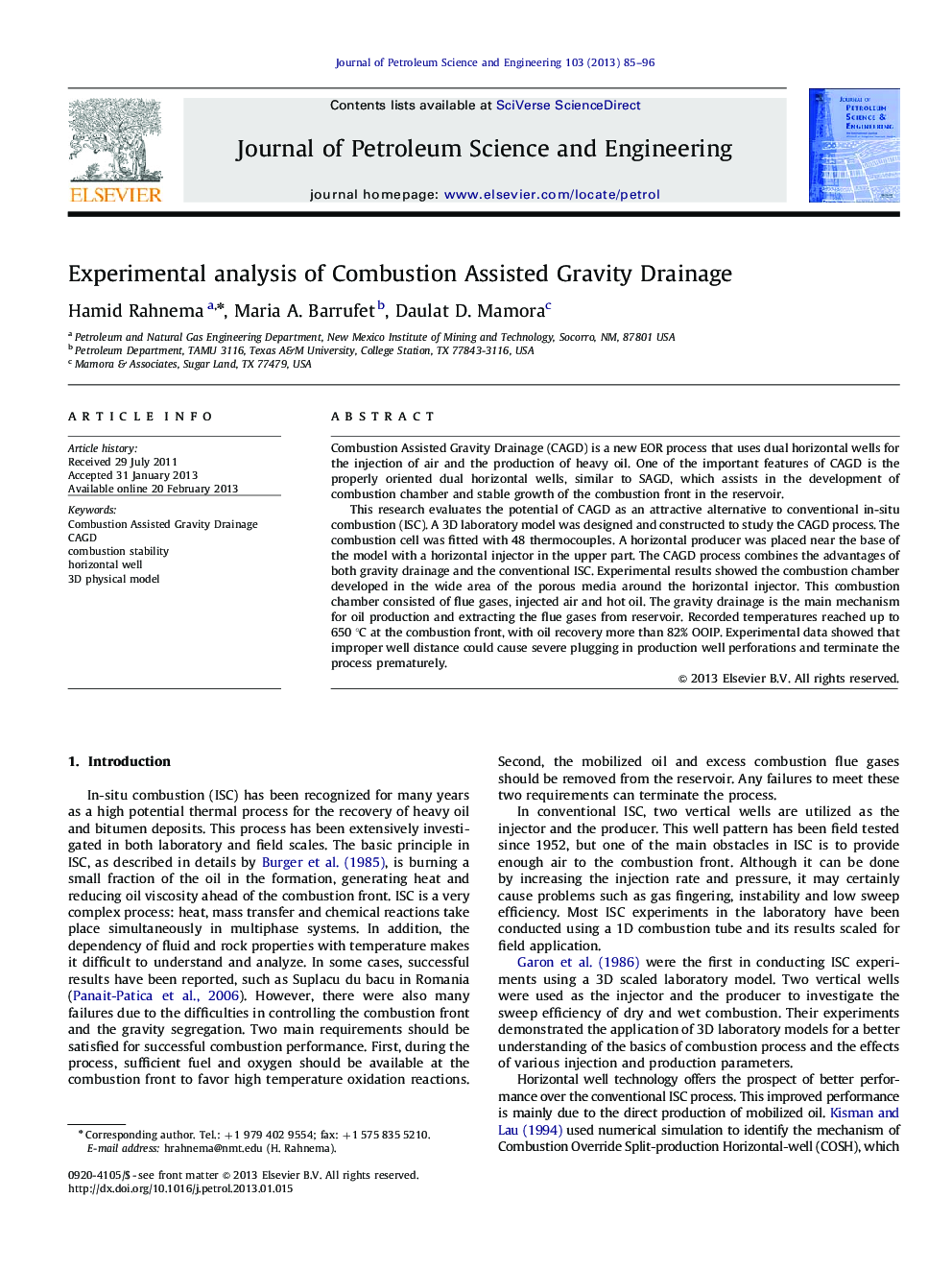| Article ID | Journal | Published Year | Pages | File Type |
|---|---|---|---|---|
| 1755323 | Journal of Petroleum Science and Engineering | 2013 | 12 Pages |
Combustion Assisted Gravity Drainage (CAGD) is a new EOR process that uses dual horizontal wells for the injection of air and the production of heavy oil. One of the important features of CAGD is the properly oriented dual horizontal wells, similar to SAGD, which assists in the development of combustion chamber and stable growth of the combustion front in the reservoir.This research evaluates the potential of CAGD as an attractive alternative to conventional in-situ combustion (ISC). A 3D laboratory model was designed and constructed to study the CAGD process. The combustion cell was fitted with 48 thermocouples. A horizontal producer was placed near the base of the model with a horizontal injector in the upper part. The CAGD process combines the advantages of both gravity drainage and the conventional ISC. Experimental results showed the combustion chamber developed in the wide area of the porous media around the horizontal injector. This combustion chamber consisted of flue gases, injected air and hot oil. The gravity drainage is the main mechanism for oil production and extracting the flue gases from reservoir. Recorded temperatures reached up to 650 °C at the combustion front, with oil recovery more than 82% OOIP. Experimental data showed that improper well distance could cause severe plugging in production well perforations and terminate the process prematurely.
► New air injection technology proposed and related experiments have been conducted. ► Effect of vertical inter-well spacing on CAGD and coke formation was investigated. ► Stable combustion is due to coke seal formation between injector and producer. ► Gravity drainage ensures stable sweep which results in recovery up to 82%. ► Significant thermal upgrading is observed during the experiment.
